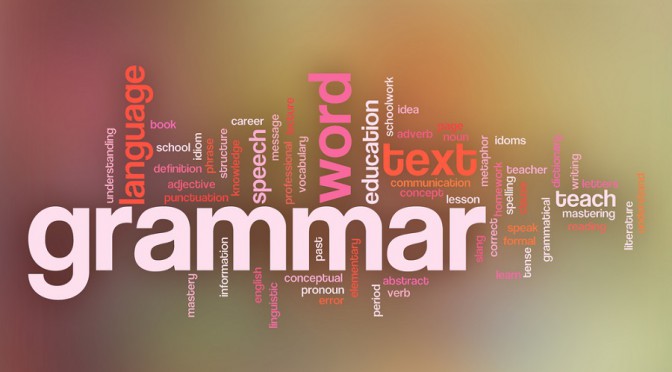语法俱乐部第六章笔记 动词时态
约 1871 字
预计阅读 4 分钟

- 动词时态架简驱繁的办法是:把be动词当做动词,其后的分词视为形容词补语看待
- 分词视为形容词
- 例1:The book is selling well.
- 动词是is,时态是现在简单式,它后面的selling well这个分词短语是形容词,当做主语补语使用,修饰the book,现在分词字尾有“持续,进行”的暗示,所以selling well这个形容词短语表示这本书正在或者一直卖的很好
- 例2:The book is well written.
- 动词是is,后面的well written这个过去分词短语当形容词补语看待,修饰主语the book,过去分词字尾具有“被动,完成”的暗示,所以well written这个形容词短语表示这本书被写或者已经写的很好
- 静态动词
- 英语动词中有一批相当“名不符实”的动词,虽然叫动词,却没有动作在里头,真正名符其实的动词如:hit,kill,eat,run,talk,jump,swim等等,代表的都是动作,以传统语法的分类来说,这种动态的动词才能够有进行式,也就是说只有动态动词才适合用来表示正在做或一直在做某个动作,例:
- He is eating breakfast now.
- The dog was swiming toward the shore then.
- I am busy. I have a lot of work to do.
- This camera belongs to me.
- He was having lunch when I called.
- 简单式
- 简单式的动词可以清楚交代此动作发生于哪个时段,而与它搭配的时间副词通常会明确标示出一个时段,也就是说,简单式的时间是个括弧的形状,我们可以用括弧把简单式的时间括起来,动作就发生于这个括弧内,这个括弧大小不拘,可以小到一个点,也可以大到无限,可是必须明确标示,否则上下文也该有清楚的暗示
- 过去时间
- 例1:The U.S. established diplomatic relations with the P.R.C in 1979.
- 例2:The movable print was introduced to England in 1485.
- 例3:I was visiting clients the whole day yesterday.
- 例4:The witness was being questioned in court when he had a heart attack.
- 现在时间
- 如果时间副词是now,或者以now为中心的一个或大或小的括弧,就应该采用现在简单式,例:
- 例1:Wang Chien-Ming pitches for the Yankees.
- 例2:All mothers love their children.
- 例3:That retail chain is selling big cokes at a discount this month.
- 例4:According to the NASA survey, the ozone layer is being depleted.
- 未来时间
- 未来时间的简单式,只是把时间的括弧放在未来,其他的原理则完全相同,未来时间,简单式动词有5种方式可以表达:
- John will leave tomorrow.
- will leave,使用到助动词will,具有最浓厚的不确定的语气,表示到时候将会,可能会,语气的重点放在未来
- John is going to leave tomorrow.
- 与will leave接近,比较口语化,偏重于现在的意图,打算,征兆等
- John is to leave tomorrow.
- John is going tomorrow.
- John leaves tomorrow.
- 采用现在简单式来表述,是语气最确定的一种讲法,虽然尚未发生,但是已经非常确定,可以排除带有不确定意味的助动词will,直接用现在简单式把它当做事实来叙述
- 未来式举例:
- 例1:I will discuss the plan with my boss next week.
- 例2:Don’t call me at six tomorrow. I will still be sleeping then.
- 过去时间的未来
- 如果以某个过去时间为出发点,它的未来式通常要拼成过去拼法的would,例:
- 例1:It was mid-1945; Japan would soon raid Peal Harbor.
- 例2:The weatherman said it would rain, but it didn’t.
- 一条语法规则:表示时间或条件的副词子句,用现在式代替未来式
- 副词子句和名词子句
- 例1:I know when he left the room.
- S + V + O,句型,是名词子句,when解释为何时
- 例2:He forgot his briefcase when he left the room.
- S + V + O,句型,是副词子句,when解释为当…的时候,它引导的是时间副词子句
- 例3:I will ask if he has the money.
- S + V + O 句型,是名词子句,if解释为是否
- 例4:If he has the money, he can help us.
- 主句是S + V + O 句型,子句是副词子句,if解释为如果,它引导的是条件副词子句
- 规则:when解释为当…的时候,if解释为如果,这种句子就是要把未来当做已经到了,就是现在,所以动词要采用现在式,例:
- 例1:When he gets here, the police will be waiting.
- 例2:If he gets to the hospital in time, he will be able to see his farther for the last time.
- 完成式
- 相对于简单式用括弧来表达时间,完成式则是以一个箭头形状的时间来表达,表示动作的截止时间。从功能上看,简单式很清楚地交代动作发生的时段,说明动作落在哪一个括弧之内;完成式则并不对动作发生的时段作明确交代,只表示在某个截止时间之前曾经做过,有做过
- 现在时间
- 例1:I am sure I have seen this face somewhere.
- 例2:We have been working overtime for a week to fill your order.
- 例3:I have lived here for 20 years.
- 例4:I have been living here for 20 years. 强调一直住
- 例5:I have read your book.
- 例6:I have been reading your book. 暗示还在看,尚未看完
- 过去时间
- 若采用过去完成式,则必须有一个过去的截止时间,也就是箭头指到某个过去时间为止,表示在那之前就…过
- 例1:Many soldier had died from pneumonia before the discovery of penicillin.
- 例2:I had been smoking three packs of cigarettes a day before I decided to quit.
- 未来时间
- 未来时间的完成式,只是把箭头的截止时间移到未来的某个点
- 例1:Next April, I will have worked here for 20 years.
- 例2:Come back at 5:00, your car will have been fixed by then.
- 例3:In two more minutes, she will have been talking on the phone for three hours.
